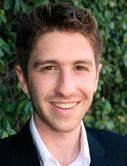CS547 Human-Computer Interaction Seminar (Seminar on People, Computers, and Design)
Fridays 11:30am-12:30pm PT · Gates B3 · Open to the public|
Tristan Harris Apture New models for browsing
September 26, 2008
For the last decade, two main browsing models have seemingly dominated the web navigation experience: 1) using the forward/back navigation stack to navigate pages synchronously, and 2) opening new browser windows and tabs to navigate pages asynchronously. Both of these models respect the basic idea that the web should be composed fundamentally of pages. But contemporary web "2.0" applications continue to show us that there is a need for alternative models. Apture is a new company pioneering new ways to both publish and browse information more efficiently and in a richer format for the end user. I will talk about several of these models, and demonstrate how it is being applied to applications such as blogging and large online publishing websites. |
|
